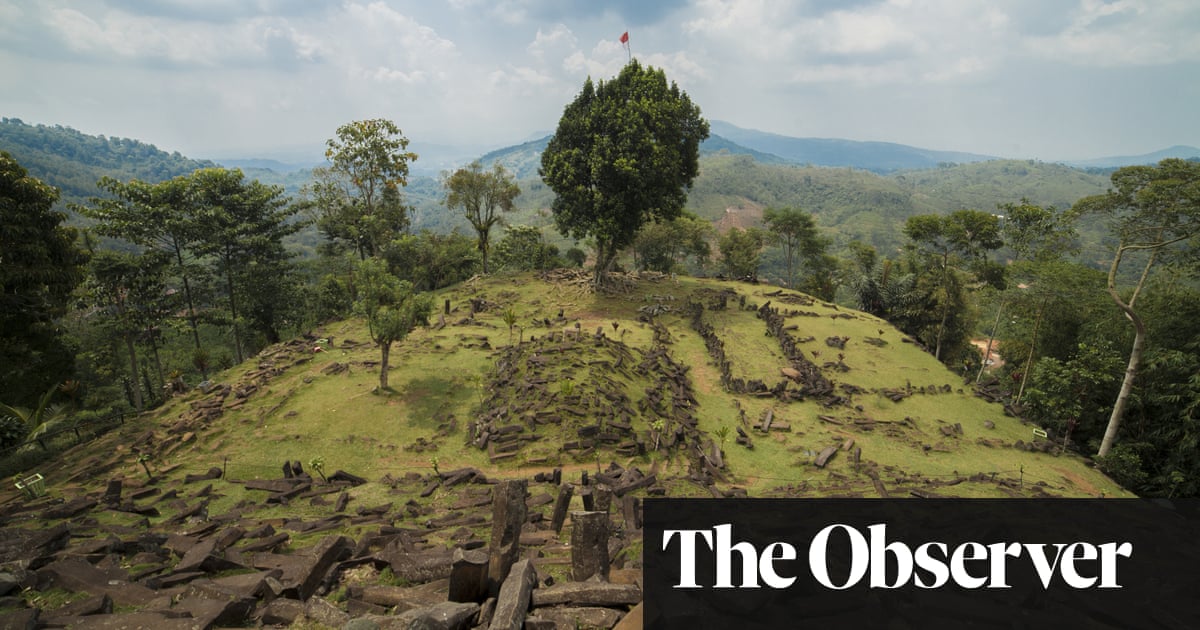
In the year 2023, there was a highly talked about scientific discovery. Scientists announced recently that the Gunung Padang site in West Java, Indonesia, could possibly be the oldest pyramid in the world, potentially dating back over 25,000 years.
This level of antiquity would be unparalleled. Stonehenge and the oldest major pyramids in Egypt are estimated to be only a few thousand years old, whereas the previous titleholder, the stone monuments at Turkey’s Göbekli Tepe, are believed to be around 11,000 years old.
According to a study published in Archaeological Prospection, Gunung Padang may be over twice as old as other megalithic structures. The authors argue that the site provides evidence of advanced building techniques that existed before the advent of agriculture.
The claim gained widespread attention, but has faced strong criticism from archaeologists who argue that the evidence provided by the team does not support their assertion about the extraordinary age of Gunung Padang. They believe that the site was most likely constructed only 6,000 to 7,000 years ago.
“The information presented in this article does not offer any evidence to support its ultimate claim – that the settlement is exceptionally ancient. However, this is the claim that has garnered attention in the headlines,” stated Flint Dibble, a researcher at Cardiff University. “I am quite taken aback that this article was published in its current form.”
After receiving criticism, the editors of Archaeological Prospection, published by Wiley, have begun an investigation. The investigation is in response to concerns raised by external sources about the accuracy of our paper’s scientific content. Professor Danny Hillman Natawidjaja, a geologist from Indonesia’s national research and innovation agency and the main author of the paper, acknowledged these concerns last week and stated that they are actively working to address them.
The revelation that the paper was edited by Graham Hancock, a controversial British writer, has sparked debate. Hancock believes that an advanced ancient civilization, which was destroyed by a cosmic event, was responsible for introducing concepts such as science, technology, agriculture, and monumental architecture to the primitive societies that emerged after the last ice age. In his Netflix series, Ancient Apocalypse, he suggests that Gunung Padang may be evidence of their accomplishments.
Many scientists criticize these concepts. Geologist Marc Defant stated in a review of his program, “He uses myths and often incorrect interpretations of archaeological sites.” Bill Farley, an archaeologist at Southern Connecticut State University, stated, “Reducing history to a basic level and disregarding the contributions of Indigenous people by claiming that a group of ancient sages taught us everything we know is oversimplifying and disrespectful.”
Last week, Natawidjaja stated to the Observer that he viewed Hancock’s concepts as a sensible working theory.
Located amidst banana trees and tea fields, at an elevation of nearly 3,000 feet and 75 miles below Jakarta, Gunung Padang consists of multiple stone terraces built on an inactive volcano. Evidence of pottery fragments indicates that the site dates back several thousand years.
Natawidjaja and his team contend that their utilization of ground-penetrating radar demonstrates the presence of multiple artificial layers beneath the main structure, with the bottommost layer, a solidified lava core, exhibiting indications of intricate sculpting.
The research team found that soil samples taken from the hill beneath the site were estimated to be between 27,000 and 16,000 years old. They also believe that there were later additions to the site about 8,000 years ago. Based on this evidence, the team concludes that Gunung Padang was constructed over 25,000 years ago, during the last ice age.
However, Dibble and other critics have dismissed this assertion. They argue that Natawidjaja and his team fail to present any proof that the buried substance was created by humans. They suggest that while it may be over 20,000 years old, it is likely of natural origin since there is no indication of human activity, such as bones or artifacts, in the surrounding soil.
According to Dibble, if a core was dropped seven meters into the ground at the Palace of Westminster and a soil sample was retrieved, it could potentially be dated as 40,000 years old. However, this does not indicate that the Palace of Westminster was constructed by ancient humans 40,000 years ago. It simply suggests that there is 40,000-year-old carbon present in the soil. Dibble finds it remarkable that this research has been published.
Natawidjaja has stood by the research conducted by his team. In an interview with the Observer, he stated, “The evidence that serves as the foundation of our study is backed by thorough exposure analysis, trenching-wall loggings, core-drilling studies, and comprehensive geophysical surveys.”
Other researchers did not accept this. According to Farley, “This assertion makes a significant and unsupported jump from the available data, which is only mildly interesting at best, to a grandiose conclusion about a buried pyramid. It is extremely weak and I believe it is entirely reasonable for this paper to be scrutinized. It was not deserving of publication and it would not surprise me if it is eventually withdrawn.”
Source: theguardian.com


